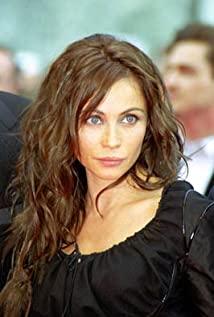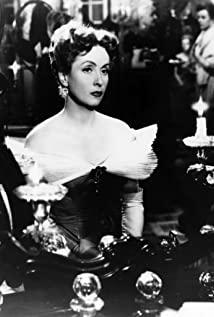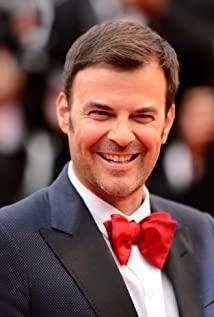——This is a quiet snow, a relatively closed mansion, accompanied by the bleak and eerie crows calling, the curtain is drawn, is a colorful and undercurrent of "love" temptation. François Ozon is a French director who is accustomed to interweaving reality and fantasy in his films, exploring the spiritual world of characters and expressing social values through stories. The beginning of the film is a long shot, but it is also an empty shot. In the white snow, in the quiet, there is a gloomy tune, a lonely crow croaks, and although there is a deer leisurely grazing on the grass, people can smell it, but it is a little seepage from the curtain. Out, the smell of "conspiracy" beneath the calm surface. Then we switched to Susan to go home, and following her, we were able to see the interior of the villa - the decoration with red and green, with the appearance of the hostess, servants, daughters and other characters, it seems to constitute an Agatha-style "countryside". "Villa School" design, a well-planned drama kicked off. It's a play without a doubt. The film is characterized by singing and dancing elements, which eases the suspenseful atmosphere, adds a vivid image, and sculpts characters in the singing and dancing. At the same time, the stage effects are more obvious, such as the stage-style standing and movements of the characters, such as the performance-style circling. At the same time, a large number of panoramic and medium and close-up shots are used, which is not only the perspective of watching the stage play, but also the most appropriate scene. But this is yet another dramatic representation of French society. At the beginning of the film, the director gave each character a flower meaning and a color: the elegant and purple grandmother is a kind of concealment - concealing the killing due to lack of love, concealing the guilt and lying about leg disease. How selfish she is, but in the end, in the redemptive song and dance of the eight people, she gave the most kind support to the heartbroken little daughter. And grandma's selfishness woven into Augustine's "rambutan-style" coat with "thorns" - she has red hair and a red dress, she is rigid, startled, and doesn't seem to care. Augustine is so aggressive that only when she peels off her coat will she discover her pale blue heart—the yearning for beauty and the desire for fatherly love. It was love's absence from childhood that made her yearn for the beauty of romance novels, and longed for Matthew's love to enrich herself, prove herself, and complete herself. And in the singing and dancing that belongs to her, how fragile she is, telling her deep love in tears. Gaby, sister to Augustine, He was older when he lost his father. Perhaps it was because she had matured since she was a child, she was disguised and proud, just like the yellow flower dotted with spots at the beginning - reminiscent of her elegant with a leopard print shawl. She walked all over the "carpet" covered by men, and could elegantly smoke a cigarette, wrapped in emerald satin, dancing with bright lights, showing her red lips, red fingers and gorgeousness. She cared so much about money that she went the same way as her mother, but this time for love. And more red and bright, is the red rose Pierrette. She is a woman who has seen the dust, so she looks down on other people, uninhibited, indifferent to others, and pursues love - and Chanel, and lover, even Gaby. During her singing and dancing, a bunch of the brightest stage lights "salivate" closely to her, peeping her to take off her clothes naturally, indulging in her revealing of love. This is not only a portrayal of her prostitute life, but also a manifestation of her taking off all opinions. She was so dangerous, yet so captivating. Pierrette's lover, Chanel, is a sunflower. Under the simple charcoal black dress, she fell into love for Pierrette, an unrecognized same-sex love. In her singing and dancing clips, the foreground of the composition is a bleak and lonely snowy landscape, and she is bound by the window frame. As the camera progresses, we can see that she is so simple in the frame, believing in God, longing for understanding and not being alone. And my favorite is Louise, she is the white Phalaenopsis - pure love. She was indifferent and disdainful, and also had a proud blond hair. In the clip of the film, Matthew's lover is mentioned, and the next scene is her mocking face. She dedicates herself to Matthew, but comes for Gaby, hiding a picture of her former hostess. She is also free and easy, wild, sexy, and dare to love and hate, and let the charm show in the dance, whether it is positive or negative. And finally Matthew's two daughters: Carnations - I will never forget you, and daisies - innocent, deep love. The two shared singing and dancing clips, Katherine teased her father mischievously, and Susan told her lover. Catherine is naive blue and nascent grass green, her planning behavior constitutes the narrative momentum, unfolds the whole story, and appears in every scene from time to time to spy on everyone. But this innocent with a little abnormal love hurt Dad. And the coral-red Susan, who was supposed to be pink, fell into an "incestuous" entanglement with Matthew, and suffered a blow from her father who was not her own, which would indeed mark her heart. In the application of montage, there are also metaphor montage and so on. For example, one of the empty shots - the bear cub who was first held in Susan's arms and finally fell down, symbolizes the contradiction between the sisters, and Susan's innocence is gone forever. The light is mainly in the lighting of the song and dance segments - such as the lights on Pierrette and Gaby. In general, this film covers all kinds of controversial love - homosexuality, Electra, incest, and also involves all kinds of unacceptable characters' psychology and behavior - selfishness, love of money, unmarried pregnancy, cheating. And combined elements such as suspense, singing and dancing, as well as stage play effects, showing a character in a more brisk atmosphere, adding various reversals, and finally revealing the truth with a flashback, "killing" the horse in absurdity. Xiu, makes people think deeply about the social psychology of each and every one. The director shows the ugliness of women, which is a common situation in social life. Although they are ugly, I think that compared to Matthew's suicide and vulnerability, they pursue love - although this love often hurts others in reality - they are pitifully strong. In the end, the eight beauties joined hands in the curtain call, and what united them was the common "for love". It's like the final puzzle piece, where each piece counts and ultimately gives you a complete picture of society. They have their own characteristics and become one, and they can eventually be you, me, her, or even anyone in the society. We can't help but wonder if love and ugliness coexist. , her, or anyone else. We can't help but wonder if love and ugliness coexist. , her, or anyone else. We can't help but wonder if love and ugliness coexist.
View more about 8 Women reviews











